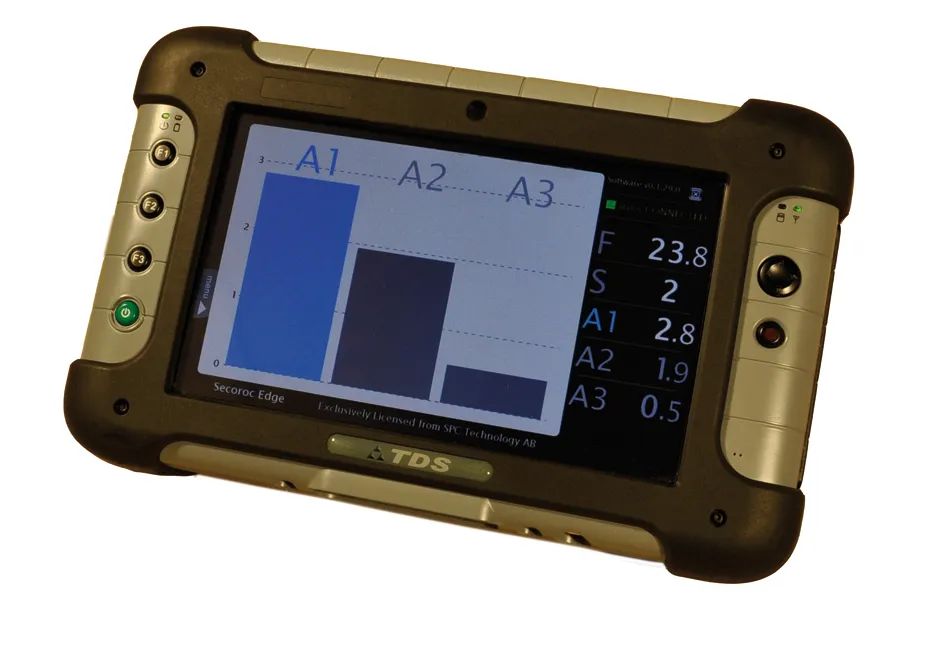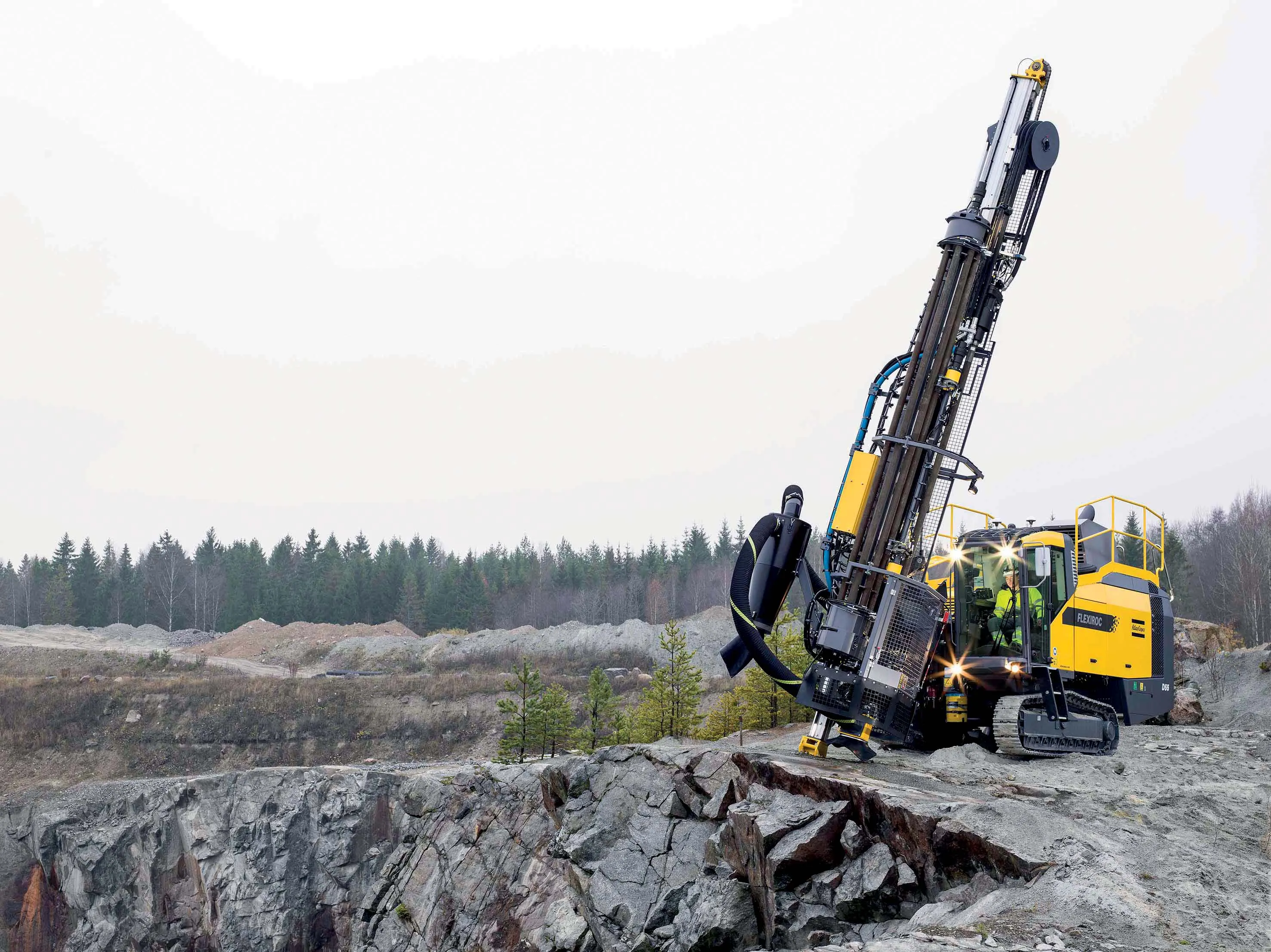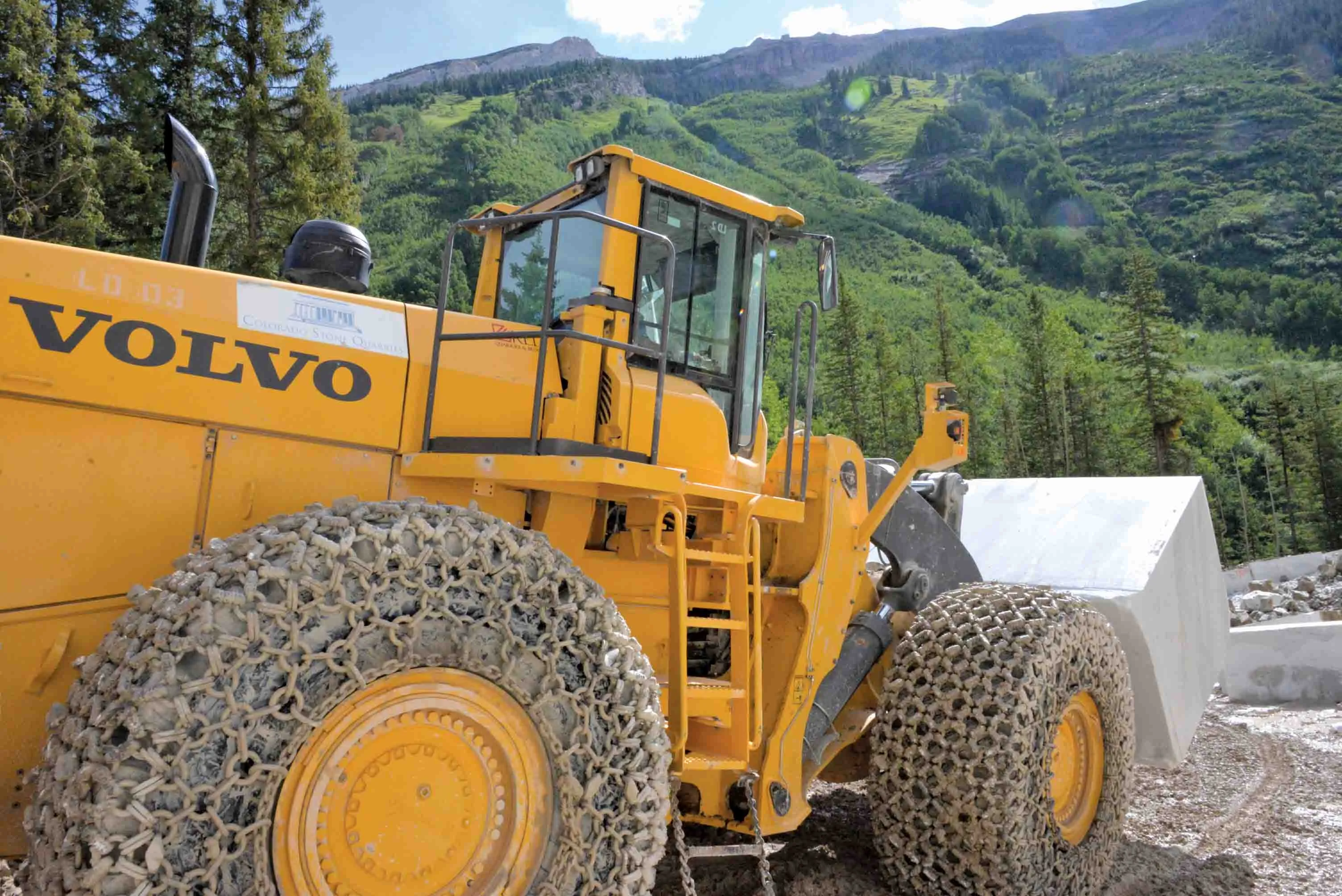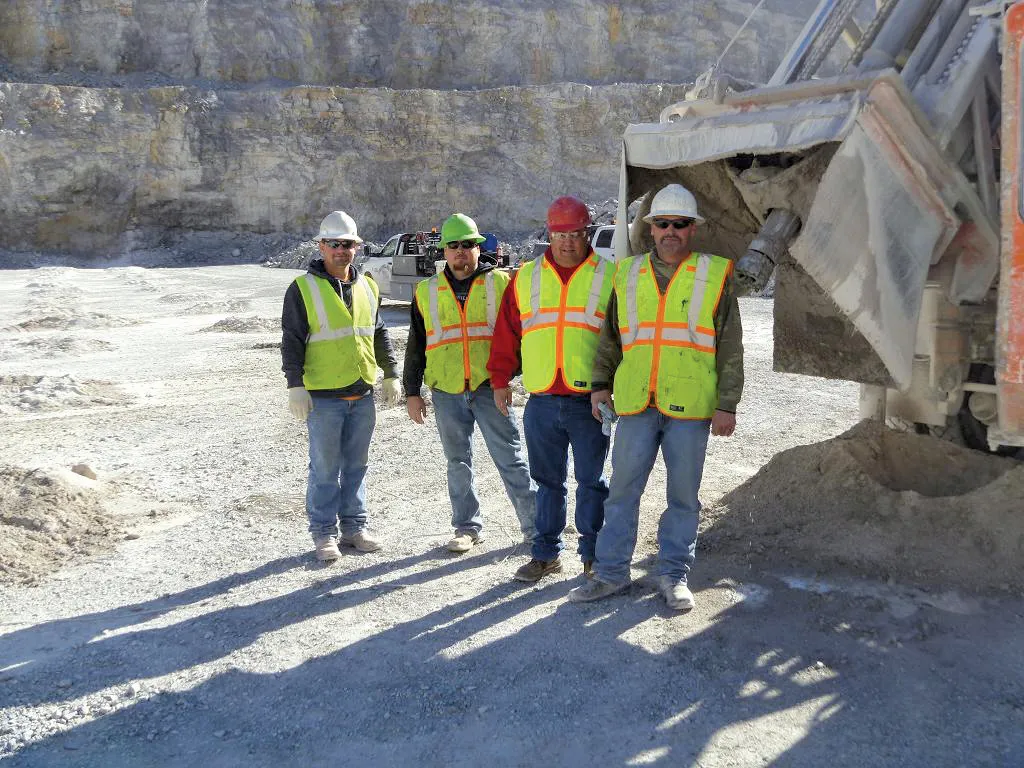There are various ways of building a tunnel, and for excavation jobs many contractors prefer to use versions of standard machines that have instead been converted to suit the confines of tunnelling applications. Some contractors opt to adapt their own units and with ventilation being an issue in underground work, engine emissions are a key focus when adapting machines. Exhaust filters and other after treatment solutions are usually required and there are an array of off-the-shelf packages available as well
July 16, 2012
Read time: 5 mins

There are various ways of building a tunnel, and for excavation jobs many contractors prefer to use versions of standard machines that have instead been converted to suit the confines of tunnelling applications.
Some contractors opt to adapt their own units and with ventilation being an issue in underground work, engine emissions are a key focus when adapting machines. Exhaust filters and other aftertreatment solutions are usually required and there are an array of off-the-shelf packages available as well as specialist firms that can fit such systems, with much of the technology having been well-proven in tunnelling and mining applications. Tunnel applications usually require special electrical systems, fire suppression equipment and machine and operator protection, again with proven tools available.
Other contractors opt instead to buy machines adapted for the task by manufacturers and718 Liebherr has long been a specialist in this field having offered tunnelling versions of its excavators for many years. However the firm has expanded its range in recent times and now offers versions of its crawler and wheeled loaders for use in underground applications as well.
178 Caterpillar is another firm now building machines for specialist applications such as tunnelling and a newly modified version of its 328DLCR compact radius excavator is carrying out important work on the A9 Autoroute construction project near Visp, in Switzerland. This is the first machine of its kind to operate on a Swiss contract and features a special front attachment supplied by German Caterpillar dealer 1255 Zeppelin.
The machine is being used by a consortium of Swiss and Austrian companies working for the canton of Valais' Routes Nationals Construction (RNC) department. The 31.8km A9 Autoroute construction project will connect Sierre in the west and the town of Brig to the east.
A fleet of Caterpillar machinery, including 325D, 329D and a couple of 308 excavators, along with a fleet of 972H wheeled loaders, is being used to excavate the blasted material in the two 3.4km tunnel tubes. The 328DLCR then finishes off the tunnel profile, using hydraulic breakers and buckets.
Caterpillar dealer Zeppelin developed the tunnel boom specifically for use on the reduced tail swing 328D. And Caterpillar dealers outside of Germany can now order this type of boom from Zeppelin to install onto the 328D upper structure. The excavator can also be equipped with a choice of tunnelling boom and stick or with face shovel work equipment.
Zeppelin is also offering a modified 321DLCR excavator with a specific tunnelling arrangement. In addition2562 Avesco, the Swiss Cat dealer, has developed a tunnelling version of the 308 excavator with a swing boom for smaller tunnels.
The 328DLCR offers a compact working solution and features a rear overhang of 305mm, providing a tail swing radius of just 1.9m. This compact configuration suits the restricted tunnelling application, while the machine is stable as it has the wide tracks from the conventional 330DL excavator. It has a heavy-duty dozer blade as standard, giving extra stability, and for use in clearing and levelling.
The boom mounting has been moved further towards the centre of the machine for the tunnel model, giving an increased lift capacity over the front end. The boom itself features a robust box section construction, with high-strength steels additional supporting struts and reinforced bearings. All pins have hard-chromium plating for optimum protection against wear. Stick digging force is a powerful 134kN, with up to 212kN of bucket digging force available, for maximum penetration in blasted material. Twin 45º tilting mechanisms allow the boom to be swung to either side of the machine and the special attachment linkage provides extra roll back for tunnel roof access. A Caterpillar CW45S mechanical quick-coupler allows rapid changes between specialist tunnelling attachments, standard buckets and work tools.
The 328DLCR is designed for use in tunnels of 6-8m in height and its transport width with 600mm track shoes is 3.2m. With the tunnelling boom in place, the machine has an operating weight of 42.5tonnes.
Drilling and blasting is widely used in the tunnelling sector and the equipment can be costly to buy and even more so to run. The drilling and blasting cycle can be crucial to a project's deadlines and achieving productivity targets is vital as time over-runs bring huge additional costs. However when drilling and blasting productivity hits delays the cause can often be attributed to the use of unsuitable drilling components rather than problems with the drilling rig itself.
When using modern hydraulic drill rigs the drilling string, which comprises the rods and the bit, carries out the task of transferring impact energy from the drifter to the rock face. These power pulses pass through the drillstring, causing it to resonate. Ensuring that the frequency of these impact energy bursts matches the resonant frequency of the assembled components plays an important role in breaking the rock at the face. The type of drill bit used is also important as the cemented carbide buttons have different profiles and material grades while the profile of the bit also varies to suit the rock type. Drillers have to ensure that the flushing of cuttings away from the hole works effectively otherwise regrinding of chippings occurs which boosts bit wear while cutting productivity. And drillers have to make sure that the carbide buttons are reground to maintain profile within tolerances and that worn bits are replaced as this factor also slows drilling productivity.
According to325 Sandvik, changing the drilling-tool system for one that could drill both 48mm diameter blastholes and long 54mm grout holes at a complex tunnel project in Norway, where the entire length had to be pre-grouted, gave multiple benefits. This boosted rig productivity by 20%, shortened the project time by about 100 days, improved safety, cut energy costs and reduced mucking, haulage and dumping costs. In a highway tunnelling job in South Korea, changing the drilling-tool system increased productivity in difficult rock conditions, as well as a 30% increase in rod life.
Some contractors opt to adapt their own units and with ventilation being an issue in underground work, engine emissions are a key focus when adapting machines. Exhaust filters and other aftertreatment solutions are usually required and there are an array of off-the-shelf packages available as well as specialist firms that can fit such systems, with much of the technology having been well-proven in tunnelling and mining applications. Tunnel applications usually require special electrical systems, fire suppression equipment and machine and operator protection, again with proven tools available.
Other contractors opt instead to buy machines adapted for the task by manufacturers and
The machine is being used by a consortium of Swiss and Austrian companies working for the canton of Valais' Routes Nationals Construction (RNC) department. The 31.8km A9 Autoroute construction project will connect Sierre in the west and the town of Brig to the east.
A fleet of Caterpillar machinery, including 325D, 329D and a couple of 308 excavators, along with a fleet of 972H wheeled loaders, is being used to excavate the blasted material in the two 3.4km tunnel tubes. The 328DLCR then finishes off the tunnel profile, using hydraulic breakers and buckets.
Caterpillar dealer Zeppelin developed the tunnel boom specifically for use on the reduced tail swing 328D. And Caterpillar dealers outside of Germany can now order this type of boom from Zeppelin to install onto the 328D upper structure. The excavator can also be equipped with a choice of tunnelling boom and stick or with face shovel work equipment.
Zeppelin is also offering a modified 321DLCR excavator with a specific tunnelling arrangement. In addition
The 328DLCR offers a compact working solution and features a rear overhang of 305mm, providing a tail swing radius of just 1.9m. This compact configuration suits the restricted tunnelling application, while the machine is stable as it has the wide tracks from the conventional 330DL excavator. It has a heavy-duty dozer blade as standard, giving extra stability, and for use in clearing and levelling.
The boom mounting has been moved further towards the centre of the machine for the tunnel model, giving an increased lift capacity over the front end. The boom itself features a robust box section construction, with high-strength steels additional supporting struts and reinforced bearings. All pins have hard-chromium plating for optimum protection against wear. Stick digging force is a powerful 134kN, with up to 212kN of bucket digging force available, for maximum penetration in blasted material. Twin 45º tilting mechanisms allow the boom to be swung to either side of the machine and the special attachment linkage provides extra roll back for tunnel roof access. A Caterpillar CW45S mechanical quick-coupler allows rapid changes between specialist tunnelling attachments, standard buckets and work tools.
The 328DLCR is designed for use in tunnels of 6-8m in height and its transport width with 600mm track shoes is 3.2m. With the tunnelling boom in place, the machine has an operating weight of 42.5tonnes.
Drilling and blasting is widely used in the tunnelling sector and the equipment can be costly to buy and even more so to run. The drilling and blasting cycle can be crucial to a project's deadlines and achieving productivity targets is vital as time over-runs bring huge additional costs. However when drilling and blasting productivity hits delays the cause can often be attributed to the use of unsuitable drilling components rather than problems with the drilling rig itself.
When using modern hydraulic drill rigs the drilling string, which comprises the rods and the bit, carries out the task of transferring impact energy from the drifter to the rock face. These power pulses pass through the drillstring, causing it to resonate. Ensuring that the frequency of these impact energy bursts matches the resonant frequency of the assembled components plays an important role in breaking the rock at the face. The type of drill bit used is also important as the cemented carbide buttons have different profiles and material grades while the profile of the bit also varies to suit the rock type. Drillers have to ensure that the flushing of cuttings away from the hole works effectively otherwise regrinding of chippings occurs which boosts bit wear while cutting productivity. And drillers have to make sure that the carbide buttons are reground to maintain profile within tolerances and that worn bits are replaced as this factor also slows drilling productivity.
According to









